To choose the right mattress, consider factors like size, firmness, and material to match your sleep needs and space. Select a firmness level based on your sleep position—softer for side sleepers and firmer for back or stomach sleepers. Explore options such as memory foam for contouring support, pocket springs for motion isolation, or hybrid designs that offer both. Eco-conscious shoppers may prefer breathable, hypoallergenic bamboo mattresses. Remember to replace your mattress every 7 to 10 years or sooner if you notice sagging discomfort or poor sleep quality. Finding the right balance of comfort and support is key to restful sleep.
Still searching for the one you’ll spend every night with, including lazy Sunday mornings? Here at Panda, we know how important it is to find the one that gets you, so we’ve put together the ultimate mattress-buying guide. It includes how often you should change your mattress, what to look for when buying a new mattress, and the different types of mattresses on the market.
What to look for when choosing a mattress
Bad mattresses can happen to good sleepers, but once you’ve read our mattress purchase advice, you’ll always wake up on the right side of the bed. There is a lot to look out for when shopping for a new mattress, and we know it can be overwhelming!
Pay attention to mattress size; if you already have a bed, the mattress must be the same size. And if you’re shopping for both, consider the size of your room, how much space you have, and whether you’re sharing your bed with a partner or pet.
Look for a supportive mattress, and think about where you should be looking on the firmness scale – more on that later. Mattress material is another important factor to consider, especially if you have allergies or are shopping with the environment in mind.

What are the different types of mattresses?
If you’re a Princess and the Pea type, you’ll want to have a good base for sleeping – and any snag will put you off getting your eight hours of rest. There is a whole range of mattresses on the market, and it’s time to decide which mattress type is best for you…
Hybrid mattresses
If you can’t decide between a spring or memory foam mattress, you don’t have to! Hybrid mattresses are the answer, combining everything you know and love about memory foam and spring mattresses. Made up of layers of both foam and springs, hybrid mattresses contour to your body while relieving pressure points and offering motion control. Many hybrid mattresses are made with sleep technology that counteracts the heat retention of memory foam, and they offer plenty of benefits.
Bamboo mattresses
If you’re an eco-conscious shopper, bamboo mattresses are a great option. Bamboo is naturally antibacterial to keep sleep fresh, hypoallergenic to prevent irritation, and breathable for easy sleep. It’s naturally thermoregulating too, so whether you’re a hot or cold sleeper you’ll love it.
Bamboo is a sustainable material choice; compared with traditional mattress materials, it doesn’t need as much water to grow and requires no pesticides. It is naturally biodegradable and will break down at the end of its life compared with synthetic materials which have to be taken to landfill for disposal. Requiring minimal energy to grow, it leads to a small carbon footprint, unlike springs or memory foam.
Memory foam
Memory foam is a popular mattress type, often labelled as the best mattress for back sleepers. Originally developed by NASA for space aircraft cushions, memory conforms to the body and relieves those aching pressure points. It gets plenty of points for support and comfort by supporting spinal alignment and posture. However, memory foam can often retain heat, making it less popular with warm sleepers. Memory foam mattresses are typically higher on the mattress firmness scale, so if a firm mattress is the one for you, then you’re onto a winner.
Open spring mattresses
Open spring mattresses contain continuous coil springs – they are the most traditional and affordable on the market. While not the most supportive, as they don’t contour to your body, they provide enough support for sleeping and are a great option for little ones or guest beds.
Compared with memory foam mattresses, an open spring has better airflow and ventilation as the coils don’t trap heat. Lightweight and fairly durable, they make for great budget mattresses. Unfortunately, the open spring loses its zing over time and can be prone to sagging.
Pocket spring mattresses
Pocket spring mattresses have individually wrapped coils in pockets, offering more support than an open spring mattress. Couples love pocket spring mattresses, as they offer motion control, meaning when one person moves, the other is less likely to feel it. Providing spinal alignment, the pocket spring mattress helps to support your neck, back and hips.
However, pocket spring mattresses require regular flipping and rotating to keep them at their optimum level of support – and they’re quite heavy, so this can be difficult! These mattresses can also be noisy, though they’re definitely quieter than an open spring mattress…
Latex mattresses
Latex mattresses are durable, hypoallergenic and supportive. They are also really cooling, making them another great choice for hot sleepers. People with a higher body weight often prefer latex, as it softly cradles the body.
Mattress size guide
It’s really important to choose the right size mattress, and to make sure you’re selecting the right option if shopping online. If you have a double bed, you need a double mattress – and if you’re starting from scratch, measure the space in your room to decide which bed size will be the perfect fit.
| UK Single | UK Small Double | UK Double | UK King | UK Super King | EU Single | EU Double | EU King | EU Emperor |
|---|---|---|---|---|---|---|---|---|
| 190 x 90cm | 190 x 120cm | 190 x 135cm | 200 x 150cm | 200 x 180cm | 200 x 90cm | 200 x 140cm | 200 x 160cm | 200 x 200cm |
What is the role of mattress size?
Choosing the right mattress size is essential for comfort and functionality. Consider the size of your bedroom, the number of sleepers, and any specific space constraints or preferences. From single to emperor, various sizes accommodate different needs. Ensure that your chosen mattress size allows for enough space to move around comfortably and fully stretch out. If you already have your bed base, then be sure to pick the one that fits perfectly!

What mattress firmness do you need?
The mattress firmness scale is the simplest way to determine your need for the best night’s sleep. It ranges from one to ten, with one being the softest and having no support and ten being the most firm with very little comfort. Understanding the right level of mattress firmness for you is all about knowing your body, your weight, and how much support you need while sleeping.
How important is the lifespan of mattresses
The lifespan and durability of a mattress are important considerations, as they can impact its long-term value and your sleep experience – you want your investment to last and for better sleep to be a feature in your life for a long time. Different materials have varying lifespans, with higher-density foams and natural latex typically lasting longer. Additionally, factors such as mattress construction, quality of materials, and proper maintenance (according to the manufacturer’s instructions) all contribute to the durability. Researching the expected lifespan and seeking warranties can help you make an informed decision. You should also look out for signs that it’s time to replace your mattress: when it no longer feels as comfortable or supportive as it once did or when you can see obvious signs of wear and tear.
Budget and quality considerations
While budget is essential for many shoppers, balancing cost and quality is important. A mattress is a long-term investment in your sleep and health, so opting for the highest quality within your budget is generally advisable. Remember that better-quality options tend to cost more, but it’s worth spending a little more if you can. Look into free trial periods to ensure you love your new mattress before committing, and research warranties and return policies, too. Longer guarantee periods tend to indicate higher quality! Shop for a sale, and look out for discount codes.
Look for expert advice
When doing further research, look for the best resources available – blogs, both branded and independent, can be a great source of information. Read reviews to see what real customers think of their purchase, and to see which mattresses come out on top in terms of comfort, support, and other factors. You might want to speak to a sleep specialist or doctor, especially if you suffer from any type of medical condition like insomnia, sleep apnoea, or severe pain. Read into what experts have to say on the best type of mattress, and look out for products that come recommended by osteopaths, sleep coaches, and more.
What is the best mattress for my weight?
Depending on your weight, you might need more or less support from your mattress at night. It can be hard to know how to choose the right mattress, but we’ve got you covered. If you weigh eight stone or less, a softer mattress is perfect for you; if you weigh between eight and sixteen stone, a medium-firm mattress will suit you best. Those weighing above sixteen stone opt for a firm mattress at the top of the mattress firmness scale.
How often should you change your mattress?
Changing your mattress regularly is crucial for maintaining good sleep quality. Our orthopaedic expert, Bethany Lawrence advises that a supportive mattress is the basis for restorative sleep: 'Your mattress is the foundation of a good night's sleep, especially when it comes to orthopaedic health. Consider upgrading to a mattress that provides adequate support for your spine and joints.' The general guideline for changing your mattress is every 7 to 10 years, though this can vary based on different factors like mattress type, usage, weight, etc. In addition to these factors, there are clear signs that indicate it's time for a new mattress:
- Sagging
- Lumping
- Coils/springs poking through
- Odd smells or stains
-
Increased joint pain
If you feel worse when you wake up than when you go to bed, you’re ready to find a mattress which understands your needs.
What mattress is best for your sleep position
We can tell you which type of mattress is best for your sleeping style without judgment – but we can’t tell you which sleeping positions are compatible with each other!
Those who sleep on their side will need a mattress which accommodates their shoulders and hips sinking down. On the firmness scale this would be a four, five or six, which is medium-soft or medium. The best-recommended mattress for side sleepers would be a hybrid mattress, but memory foam works well too.
If you lie on your back when hitting the hay, we suggest a medium-firm mattress at around five to seven on the scale, as you’ll need support for your back. Your spine should curve and mould into the bed, so a pocket spring or memory foam mattress will have your back!
Front sleepers can be back pain sufferers, so a firm or medium firm mattress is best for providing support in this position. This would be a six, seven or eight on the scale. Hybrid mattresses would be ideal for a rejuvenating night’s sleep.
Conclusion
A lot of mattress shopping comes down to personal preference. Try different mattresses and see which one offers the support, comfort and firmness you need. Hopefully, this guide has answered your questions, from the best mattress for front sleepers to what the mattress firmness scale is all about! Shop our range of Hybrid Bamboo Mattresses with a 100-night Trial to help you wake up feeling refreshed every day.
Mattress Buying Guide FAQs
1. How do I determine the right mattress size for my needs?
Consider the size of your bedroom, your body size, and whether you share your bed. A larger room and sharing with a partner typically call for a queen or king-size mattress, while solo sleepers might prefer a twin or full-size, depending on space and comfort needs.
2. What mattress type is best for back pain?
For back pain, a medium-firm mattress is often recommended. Memory foam or latex can provide good support and contouring to reduce pressure points and maintain spinal alignment.
3. How often should I replace my mattress?
The general recommendation is every 7-10 years. However, this depends on the mattress quality, how well it's maintained, and whether you start experiencing discomfort or reduced sleep quality.
4. Can the right mattress help with sleep disorders?
While a mattress alone can't cure sleep disorders, the right one can improve sleep quality. It can help reduce discomfort, provide better support, and create a more conducive sleep environment.
5. How do I choose a mattress if I have allergies?
Look for hypoallergenic mattresses made from materials like bamboo that resist dust mites, mould, and mildew. Bamboo and certain memory foam are often good choices for allergy sufferers.

![[MattressTopper] Panda London Memory Foam Bamboo Mattress Topper package box](http://pandalondon.com/cdn/shop/files/Bamboo_Mattress_Topper_Package_Box.webp?v=1742301823&width=1500)
![[MattressTopper] Panda London Memory Foam Bamboo Mattress Topper on the floor](http://pandalondon.com/cdn/shop/products/Panda-Memory-Foam-Bamboo-Mattress-Topper-Yoga-e1624045454555.jpg?v=1742301823&width=1000)
![[MattressTopper] Bamboo Mattress Topper Lifestyle Image with Memory Foam Pillows Product Page](http://pandalondon.com/cdn/shop/files/Bamboo_Mattress_Topper_Lifestyle_Image_with_Memory_Foam_Pillows_Product_Page.webp?v=1742301823&width=800)
![[MattressTopper] Bamboo Mattress Topper Lifestyle Image with Bamboo Pillows In the Garden room Product Page](http://pandalondon.com/cdn/shop/files/Bamboo_Mattress_Topper_Lifestyle_Image_with_Bamboo_Pillows_In_the_Garden_room_Product_Page.webp?v=1742301823&width=800)
![[MattressTopper] Panda London Memory Foam Bamboo Mattress Topper side](http://pandalondon.com/cdn/shop/files/Mattress_Topper_Isolated_-_resized.jpg?v=1742301823&width=800)
![[HybridMattressPro] Hybrid Bamboo Mattress Pro with T3 Platinum Award and The Telegraph 2025](http://pandalondon.com/cdn/shop/files/Mattress_Pro_with_Two_Awards_Product_Image_webp.webp?v=1741265625&width=1000)
![[HybridMattressPro] Breathable Hybrid Bamboo Mattress](http://pandalondon.com/cdn/shop/products/Breathable-Hybrid-Bamboo-Mattress.jpg?v=1740148067&width=1920)
![[HybridMattressPro] Hybrid Bamboo Mattress Pro Cover Zip](http://pandalondon.com/cdn/shop/files/Hybrid_Bamboo_Mattress_Cover.jpg?v=1740148067&width=800)
![[HybridMattressPro] Panda Hybrid Bamboo Mattress Pro](http://pandalondon.com/cdn/shop/files/Hybrid_Bambo_Memory_Foam_Mattress_-_BioCell_Foam_x.jpg?v=1741268254&width=800)
![[HybridMattressPro] Couple on a Hybrid Bamboo Mattress Pro](http://pandalondon.com/cdn/shop/files/Hybrid_Bamboo_Mattress_Couple.jpg?v=1741268254&width=800)
![[CloudDuvet] Panda London The Cloud Bamboo Duvet Packaging](http://pandalondon.com/cdn/shop/products/Panda-London-The-Cloud-Bamboo-Duvet-Panda-Life-scaled_00a651ad-4ca3-4105-b520-12a94c1a4f71.jpg?v=1713363286&width=1920)
![[CloudDuvet] Panda London The Cloud Bamboo Duvet Rolled](http://pandalondon.com/cdn/shop/products/Duvet-Listing-Images03.jpg?v=1713361452&width=1000)
![[CloudDuvet] Panda London The Cloud Bamboo Duvet Girl Huggin a Duvet on the Bed](http://pandalondon.com/cdn/shop/files/Cloud_Bamboo_Duvet_-_Lady_Hugging_it_on_Bed_LifestyleImage.jpg?v=1719327585&width=1000)
![[CloudDuvet] Panda London The Cloud Bamboo Duvet Guy In the Air with Cloud Bamboo Duvet](http://pandalondon.com/cdn/shop/files/GuyonaHybridBambooMattresswithCloudDuvet.jpg?v=1743097928&width=2000)
![[CloudDuvet] Panda London The Cloud Bamboo Duvet Snuggle Snaps](http://pandalondon.com/cdn/shop/files/Snuggle_Snaps_Image_Webp.webp?v=1743097928&width=1500)
![[BBWhite] White 100% Bamboo Bedding](http://pandalondon.com/cdn/shop/files/Pure_White_Full_Bed.webp?v=1719581797&width=1000)
![[BBWhite] White 100% Bamboo Bedding Texture](http://pandalondon.com/cdn/shop/files/100_Bamboo_Bedding_-_Pure_White_-_Close_Up_02.webp?v=1719581781&width=1000)
![[BBWhite] White 100% Bamboo Bedding Woman in bed sleeping](http://pandalondon.com/cdn/shop/files/100-Bamboo-Bedding-Set-Pure-White-BB.webp?v=1719581846&width=768)
![[BBWhite] White 100% Bamboo Bedding Woman Duvet cover buttons](http://pandalondon.com/cdn/shop/files/hand_and_buttons_1.webp?v=1719581781&width=1000)
![[BBWhite] White 100% Bamboo Bedding Woman in bed looking and smiling-](http://pandalondon.com/cdn/shop/files/SatonMadeBed-White100_BambooBedding-white_-_BB_SideShot1000x1000.webp?v=1719581864&width=980)
![[BBUrbanGrey] Urban Grey 100% Bamboo Bedding](http://pandalondon.com/cdn/shop/files/Made_Bed_-_Urban_Grey_-_Wide_Shot_2_1_1.webp?v=1719579036&width=1000)
![[BBUrbanGrey] Cloud Duvet Urban Grey 100% Bamboo Bedding Set](http://pandalondon.com/cdn/shop/files/Cloud_Duvet_-_Grey_-_Close_up_2.webp?v=1719579037&width=1000)
![[BBUrbanGrey] Urban Grey 100% Bamboo Bedding Set Woman sitting on the bed](http://pandalondon.com/cdn/shop/files/Sat_in_Bed_-_Grey_100__Bamboo_Bedding_-_Wide_Shot.webp?v=1719579036&width=1000)
![[BBUrbanGrey] Urban Grey 100% Bamboo Bedding Set Woman Duvet buttons Panda London](http://pandalondon.com/cdn/shop/files/hand_buttons_grey_bedding_1.webp?v=1719579036&width=1000)
![[BBUrbanGrey] Woman Sitting on the Bamboo Bedding with coffee](http://pandalondon.com/cdn/shop/files/SatonMadeBed-White100_BambooBedding-SideShot1000x1000.jpg?v=1725017920&width=1000)
![[BBNavyBlue] Deep Sea Navy Blue 100% Bamboo Bedding](http://pandalondon.com/cdn/shop/files/Made_Bed_-_Navy_-_Wide_Shot_3_copy.webp?v=1719579268&width=1000)
![[BBNavyBlue] Deep Sea Navy Blue 100% Bamboo Bedding Texture](http://pandalondon.com/cdn/shop/files/Cloud_Duvet_-_Navy_-_Close_up_2.webp?v=1719579269&width=1000)
![[BBNavyBlue] Deep Sea Navy Blue 100% Bamboo Bedding Woman Sitting on the bed](http://pandalondon.com/cdn/shop/files/Sat_Up_in_Bed_-_Navy_100__Bamboo_Bedding_-_Hands_on_Bed.webp?v=1719579268&width=1000)
![[BBNavyBlue] Deep Sea Navy Blue 100% Bamboo Bedding Duvet Cover Buttons](http://pandalondon.com/cdn/shop/files/Cloud_Duvet_Cover_Buttons_-_Deep_Sea_Navy.webp?v=1719579268&width=1000)
![[BBNavyBlue] Deep Sea Navy Blue 100% Bamboo Bedding Woman sitting on the bed looking away](http://pandalondon.com/cdn/shop/files/SatonMadeBed-White100_BambooBedding-SideShot1000x1000-001.webp?v=1719579973&width=980)
![[BBPink] Vintage Pink Blue 100% Bamboo Bedding](http://pandalondon.com/cdn/shop/files/Made_Bed_-_Pink_-_Wide_Shot_copy.webp?v=1719580457&width=1000)
![[BBPink] Vintage Pink Texture 100% Bamboo Bedding](http://pandalondon.com/cdn/shop/files/Cloud_Duvet_-_Pink_-_Close_up_2.webp?v=1719580456&width=1000)
![[BBPink] Vintage Pink Woman Sitting on the 100% Bamboo Bedding](http://pandalondon.com/cdn/shop/files/Sat_Up_in_Bed_-_Pink_-_Hands_on_Bed.webp?v=1719580456&width=1000)
![[BBPink] Vintage Pink Woman Sitting on the 100% Bamboo Bedding Duvet Cover](http://pandalondon.com/cdn/shop/files/Cloud_Duvet_Cover_Buttons_-_Vintage_Pink.webp?v=1719580918&width=1000)
![[BBPink] Vintage Pink Woman Sitting on the 100% Bamboo Bedding Woman looking far away](http://pandalondon.com/cdn/shop/files/SatonMadeBed-White100_BambooBedding-SideShot1000x1000-001_Vintage_Pink.webp?v=1719581097&width=980)
![[BBGrey] Light Grey 100% Bamboo Bedding](http://pandalondon.com/cdn/shop/files/Made_Bedding_in_Bedroom_-_Urban_Grey_-_Wide_Shot.webp?v=1719581248&width=1000)
![[BBGrey] Light Grey 100% Bamboo Bedding texture](http://pandalondon.com/cdn/shop/files/Texture17.webp?v=1719581721&width=1000)
![[BBGrey] Light Grey 100% Bamboo Bedding with Woman smiling](http://pandalondon.com/cdn/shop/files/Sat_Up_in_Bed_-_Grey_-_Hands_on_Bed.webp?v=1719581248&width=1000)
![[BBGrey] Light Grey 100% Bamboo Bedding with Duvet Cover buttons](http://pandalondon.com/cdn/shop/files/Cloud_Duvet_Cover_Buttons_-_Quiet_Grey.webp?v=1719581248&width=1000)
![[BBGrey] Light Grey 100% Bamboo Bedding with Woman smiling and sitting coffee](http://pandalondon.com/cdn/shop/files/SatonMadeBed-White100_BambooBedding-SideShot1000x1000-002-_Grey.webp?v=1719581351&width=980)
 Hybrid Bamboo Pillow
Hybrid Bamboo Pillow Memory Foam Bamboo Pillow
Memory Foam Bamboo Pillow Kids Memory Foam Bamboo Pillow
Kids Memory Foam Bamboo Pillow Baby Memory Foam Bamboo Pillow
Baby Memory Foam Bamboo Pillow Panda Cloud Duvet
Panda Cloud Duvet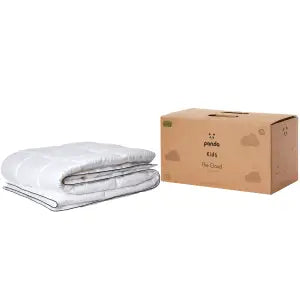 Kids Cloud Duvet
Kids Cloud Duvet

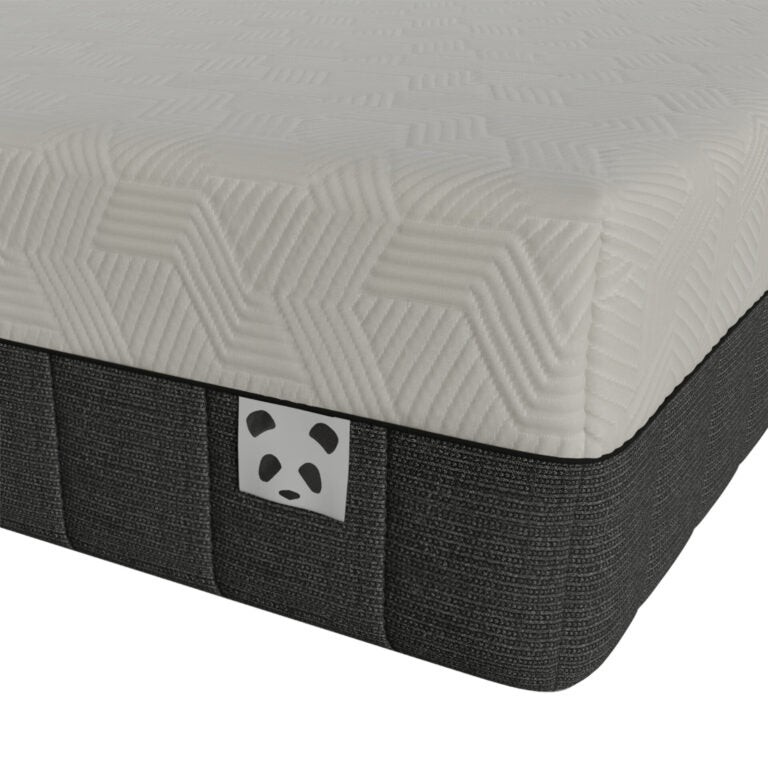
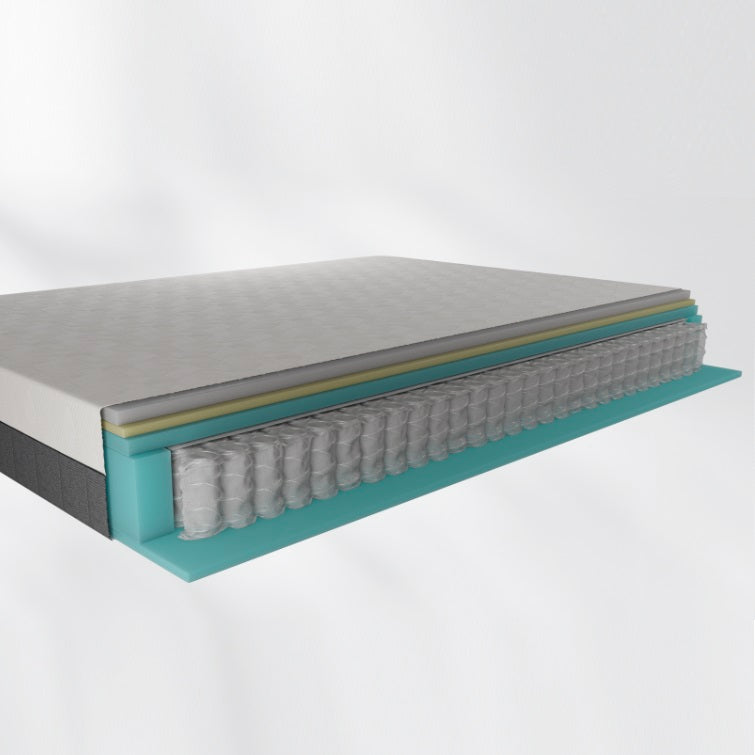
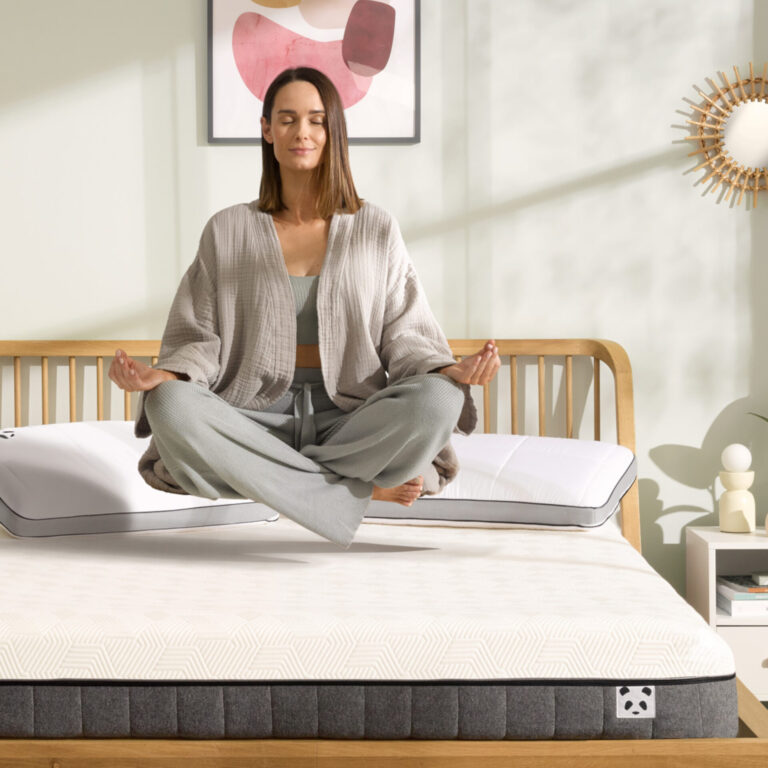
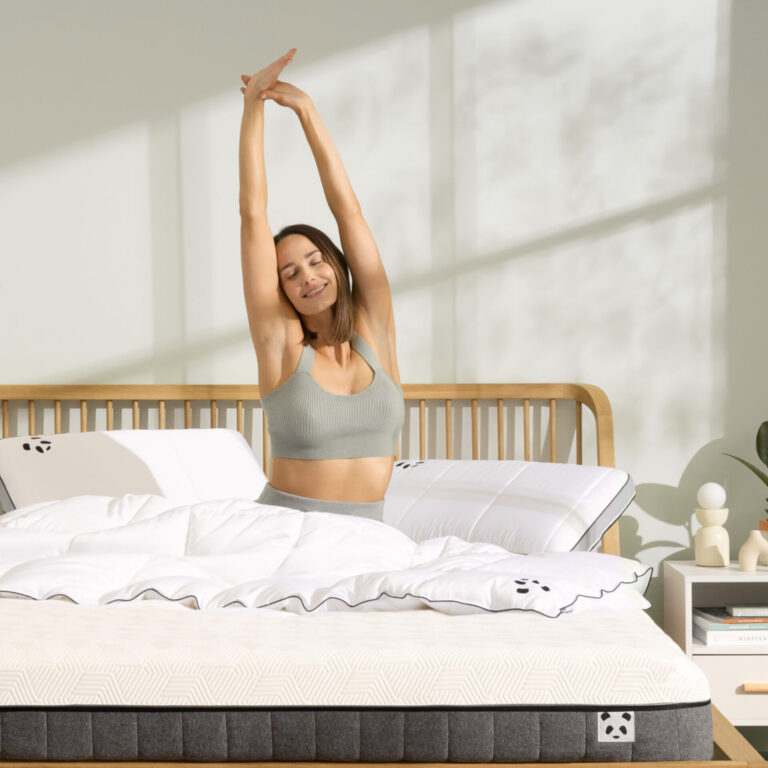
![[all] Bamboo Mattress Protector Package - PandaLondon](http://pandalondon.com/cdn/shop/files/Bamboo_Mattress_Protector_-_Packaging_Image_-_White_Background.webp?v=1721139172&width=1900)
![[all] Bamboo Mattress Protector for Hybrid Bamboo Mattress](http://pandalondon.com/cdn/shop/files/Bamboo_Mattress_Protector_New.webp?v=1721138562&width=1000)
![[all] Book on a Bamboo Mattress Protector](http://pandalondon.com/cdn/shop/products/Mattress-Protector-Listing-Images02.jpg?v=1721139189&width=1500)
![[all] Bamboo Mattress Protector Corner](http://pandalondon.com/cdn/shop/products/Mattress-Protector-Listing-Images03-e1623787734812.jpg?v=1721139189&width=1300)
![[all] Bamboo Mattress Protector Corner in line Panda London](http://pandalondon.com/cdn/shop/products/Mattress-Protector-Listing-Images04.jpg?v=1721139183&width=1500)
![[all] Panda Bamboo Mattress Protector Panda London](http://pandalondon.com/cdn/shop/files/Panda-Bamboo-Mattress-Protector-Guarantee-768x768_jpg_450393f5-91a9-499f-b15a-12d636a9a8b7.webp?v=1721139183&width=768)